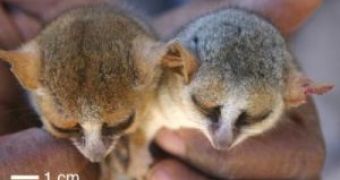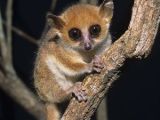Biologists have discovered that nocturnal lemurs thought to represent different species due to their strikingly different coat colors, are in fact morphs of the same species.
For a long time, species classification was made using visible physical traits of plants or animals.
Now, American researchers analyzed mitochondrial genes from cytochrome b to check the genetic relationship of 70 mouse lemurs, previously believed to belong to up to three different species.
"Our study combined morphological, genetic, geographic, and ecological data giving a multidimensional, and hopefully more accurate picture of species diversity," said Kellie Heckman, a post-doctoral fellow in ecology and evolutionary biology at Yale.
"Over the past decade, the number of proposed species of these lemurs has jumped from two to fifteen, based on physical differences. It pointed to the need for caution when identifying new species solely on the basis of visual or genetic characteristics."
The studied lemurs had three distinctly different coat colors and lived in different forest habitats in southern Madagascar, classic clues to separate species.
Surprisingly, geneticists found that the 70 lemurs have the same genetic composition of the cytochrome b, which means they don't indicate evolutionary split off alike, thus all three types belong to the same species, Microcebus griseorufus.
Mitochondrial cytochrome b is a gene marker, known to mutate at a rate similar to that of speciation, while nuclear genes usually evolve more slowly or more rapidly with population drift.
The researchers also revealed that lemurs with each color morph are found in all three geographical locations in similar proportions.
As the mouse lemurs are nocturnal, for them, auditory or olfactory cues are more important in inter-individual recognition than visual indicators, such fur color.
So, as this trait has a minor importance, some amount of fur color variation installed inside the populations.
"There is a remarkable amount of diversity in primates," said Heckman.
"We wanted to more thoroughly document this with both morphologic and genetic analysis."
This kind of studies warns the field biologists to treat with more caution the identifying of new species.
A complex approach combining morphological, genetic, geographic, and ecological data would do the best.

 14 DAY TRIAL //
14 DAY TRIAL // 
